Today’s heavy foundation loads and fast track jobs require modern construction control tools. Early prevention of problems is the most effective means to avoid costly and time consuming construction delays. Recent developments in equipment and methods aid in diagnosing the problems in pile foundations. Pilex India offers such services with latest technology in the market.
The Pile Integrity Tester (PIT), Cross-Hole Sonic Analyzer (CHA), Pile Driving Analyzer (PDA) and the signal matching techniques (CAPWAP) serves to verify the integrity, driving stresses, hammer performance and bearing capacity as well as quality and consistency of various pile installations. Pilex India aims to provide quality testing methods and analysis techniques for testing piles after and during installation of piles. These testing tools are applicable to all types of piles, be it driven or cast-in-situ. Geotechnical engineers and contractors would find these tools helpful in improving quality control and installation of safe and economical piled foundations. The company is offering services for Cross-hole Sonic logging for piles and diaphragm walls.
We also provide services for Static Load Test (Compression, Tension & Lateral) with Pile Instrumentation using vibrating wire Strain Gauges and Electronic displacement transducers. We are also engaged in other NDT tests for concrete members. Our services in the above fields are primarily aimed to cater to clientele ranging from small to large scale establishments.
High Strain Dynamic Load Test (HSDT)
“Quick, cost saving and reliable. Save time, money and gain quality assurance”
High-Strain Dynamic Load Test is performed using Pile Driving Analyzer (PDA) together with strain sensors and accelerometers. PDA is used to verify the mobilized capacity of all types of drilled and driven piles. Testing is conducted in a quick and non-destructive manner, and is in accordance to ASTM D4945-2000. Dynamic measurements of force and velocity will be collected by the strain sensors and accelerometers attached to the pile. The PDA monitors the strain and acceleration caused by the hammer impact, and processes these signals after each hammer blow during driving or restrikes to give immediate visual. The signals are digitized by PDA, results are computed, and the data array of the signals for a blow is stored.
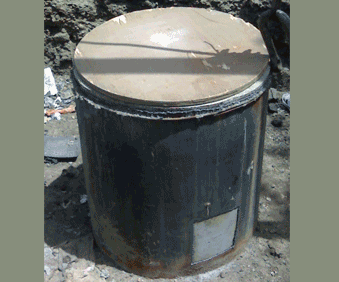 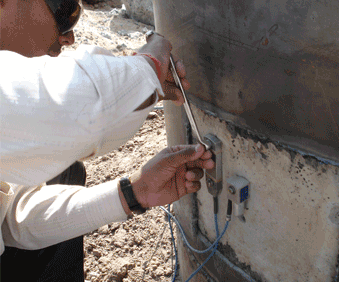
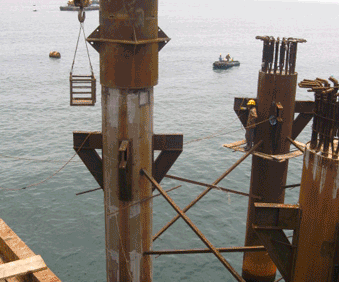 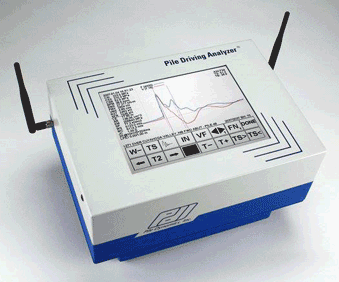
The following PDA results are typically obtained on site
- Mobilized Static Load Capacity based on CASE method
- Pile Integrity – location and extent of damage for pile driving
- Driving Stresses – maximum compression / tension forces at pile top / toe
- Hammer Performance – maximum energy transferred to pile
Advantages of Dynamic Pile Testing :
- Fast and effective method of assessing pile foundation bearing capacity.
- Applicable for steel and concrete piles (driven, bored or precast piles)
- Instant preliminary results on site
- Determines Load Resistance Distribution (Skin Friction & End Bearing)
- Evaluates pile integrity and location of any damage
- Feedback on maximum tension and compression forces
- Direct measurement of hammer input energy and efficiency
- Cost effective and hence more piles can be tested for QA
Static load tests are expensive and time consuming, and therefore are often conducted only on a very small number of piles. With PDA many more piles can be tested at much lower cost and speed. This increases quality assurance and helps to optimize pile driving criteria. PDA results also correlate very well with piles capacities obtained from conventional static load tests and confirm the structural integrity of the pile element. PDA is the answer for projects where static testing is prohibitively expensive or physically impossible.
Case Pile Wave Analysis Program (CAPWAP)
“CAPWAP maximizes the benefits of PDA Results”
CAPWAP is an iterative curve-fitting technique where the pile response determined in a wave equation model is matched to the measured response of the actual pile for a single hammer blow. The pile model consists of a series of continuous segments and the total resistance of the embedded portion of the pile is represented by a series of springs (static resistance) and dashpots (dynamic resistance). Static resistance is formulated from an idealized elasto-plastic soil model, where the quake parameter defines the displacement at which the soil changes from elastic to plastic behaviour. The dynamic resistance is formulated using a viscous damping model that is a function of a damping parameter and the velocity.
Low Strain Pile Integrity Testing
“Pile Integrity Tester makes it economically feasible to verify the integrity of every pile on your site”
Pile Integrity Tester (PIT), also known as Sonic Integrity Tester (SIT) or Pulse Echo Tester (PET), is used for the low strain integrity testing of piles and conforms to ASTM D5882. It is a non-destructive testing generally based on pulse echo method and is used for cast-in-place piles, driven concrete piles and concrete filled pipes. It detects potential defects such as major cracks, necking, soil inclusions or voids and, in some situations; the method can determine unknown lengths of piles. PIT does not require advance planning or access tubes. This makes it the most affordable option when the pile integrity is in doubt.
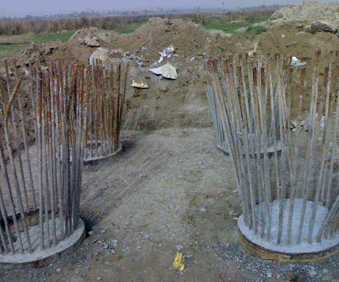 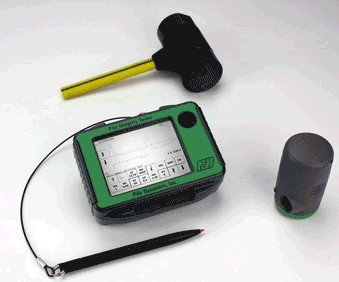
An accelerometer attached to the top or side of the installed pile monitors the impact and resulting reflections of a small hand-held hammer. The accelerometer signal is evaluated in the field or transferred to a personal computer for further analysis by PIT-W, a Windows based software. If defect is present along the shaft, its size and location can be estimated by analyzing the propagation and reflection of the wave induced on the foundation by the hammer impact. Pile Profile Analysis may be done to get the approximate shape of the pile.
Cross-Hole Sonic Logging
“Cross-Hole Analyzer, for reliable cross-hole sonic logging and improved quality assurance of concrete foundation”
Cross-Hole Analyzer (CHA) is a non-destructive test and is used to determine the quality and consistency of cast-in-place pile and conforms to ASTM D6760. Selected bored pile is pre-installed with 50mm diameter mild steel tubes (number of tubes depends on pile size, ranging from 3 to 6 tubes or more) secured to the steel cage that span the whole axial length and cast together in concrete. During testing, the tubes will need to be filled with clean water. A transmitter will be lowered down into one tube to send a high frequency signal that travel through the concrete and detected by a receiver in another tube. As these sensors are raised and/or lowered along the length of the pile, the CHA will record, at regular depth intervals, the time that the signal takes to travel from the transmitter to the receiver (First Arrival Time), as well as the relative energy signal. These two parameters will indicate the concrete quality between the pair of tubes at particular depth for any soil inclusion in the pile. The entire shaft length is logged and the test is then repeated for each pair of tubes, allowing for a full and thorough investigation of defects both along the length and by its quadrant.


Pile Instrumentation
The main objective of pile instrumentation is to establish the ‘Load Distribution Characteristics of Soil’ along the pile shaft. The instrumentation consists of installing embedment type vibrating wire strain gauges at selected levels of pile before casting of pile. The gauges are used to measure induced strains in pile concrete while static load test is conducted. From the measured strain the forces in the pile can be calculated, and thus the load distribution along pile shaft is known.

|












